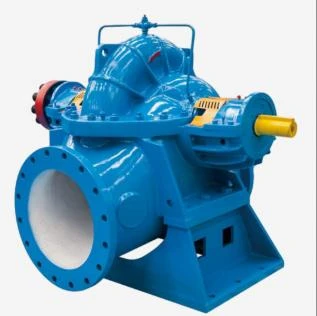English
- Afrikaans
- Albanian
- Amharic
- Arabic
- Armenian
- Azerbaijani
- Basque
- Belarusian
- Bengali
- Bosnian
- Bulgarian
- Catalan
- Cebuano
- Corsican
- Croatian
- Czech
- Danish
- Dutch
- English
- Esperanto
- Estonian
- Finnish
- French
- Frisian
- Galician
- Georgian
- German
- Greek
- Gujarati
- Haitian Creole
- hausa
- hawaiian
- Hebrew
- Hindi
- Miao
- Hungarian
- Icelandic
- igbo
- Indonesian
- irish
- Italian
- Japanese
- Javanese
- Kannada
- kazakh
- Khmer
- Rwandese
- Korean
- Kurdish
- Kyrgyz
- Lao
- Latin
- Latvian
- Lithuanian
- Luxembourgish
- Macedonian
- Malgashi
- Malay
- Malayalam
- Maltese
- Maori
- Marathi
- Mongolian
- Myanmar
- Nepali
- Norwegian
- Norwegian
- Occitan
- Pashto
- Persian
- Polish
- Portuguese
- Punjabi
- Romanian
- Russian
- Samoan
- Scottish Gaelic
- Serbian
- Sesotho
- Shona
- Sindhi
- Sinhala
- Slovak
- Slovenian
- Somali
- Spanish
- Sundanese
- Swahili
- Swedish
- Tagalog
- Tajik
- Tamil
- Tatar
- Telugu
- Thai
- Turkish
- Turkmen
- Ukrainian
- Urdu
- Uighur
- Uzbek
- Vietnamese
- Welsh
- Bantu
- Yiddish
- Yoruba
- Zulu
Telephone: +86 13120555503
Email: frank@cypump.com
Nov . 15, 2024 05:49 Back to list
'efficient solutions for transporting heavy concrete slurry ...'
Efficient Solutions for Transporting Heavy Concrete Slurry
In the construction industry, the transportation of heavy concrete slurry presents unique challenges that require innovative solutions. Heavy concrete slurry, a mix of cement, water, and aggregates, is essential for many construction applications, including foundations, flooring, and infrastructure development. However, its viscosity and weight make it difficult to transport efficiently, particularly over long distances. To address these challenges, several strategies and technologies have emerged that enhance the efficiency of transporting heavy concrete slurry.
1. Pumping Systems
One of the most effective methods for transporting heavy concrete slurry is through specialized pumping systems. Concrete pumps, such as boom pumps and line pumps, are designed to handle the high density and viscosity of concrete mixtures. Boom pumps use a series of articulated arms to reach specific areas of a construction site, while line pumps utilize hoses to move concrete over longer distances. The versatility and efficiency of these systems allow for precise placement of concrete, reducing material waste and optimizing workflow.
2. Slurry Transportation Vehicles
Dedicated slurry transportation vehicles have been developed to handle the demands of heavy concrete mixtures. These trucks are equipped with self-contained mixing units, allowing for immediate mixing and transportation. This reduces the risk of setting before the concrete reaches its destination. Additionally, modern slurry transport vehicles are designed to minimize spillage and ensure safe transport, addressing environmental concerns associated with concrete waste.
Incorporating additives and admixtures can significantly improve the flowability and workability of heavy concrete slurries. Materials such as plasticizers and superplasticizers are used to reduce the water content needed for mixing, resulting in a denser and more transportable slurry. These chemical agents enhance the slurry's viscosity, allowing it to be pumped or transported with greater ease, thereby increasing efficiency during the transportation process.
'efficient solutions for transporting heavy concrete slurry ...'

4. Optimizing Route Planning
Efficient transportation of heavy concrete slurry is also reliant on effective route planning. By analyzing traffic patterns, road conditions, and construction schedules, companies can optimize their delivery routes. This strategic approach minimizes transit time and fuel consumption, which is particularly crucial given the time-sensitive nature of concrete transportation. Additionally, employing GPS technology can provide real-time data, allowing drivers to avoid delays and adjust routes as necessary.
5. Investment in Technology
Investing in advanced technology can also lead to significant improvements in transporting heavy concrete slurry. For example, telematics systems can monitor vehicle performance, track delivery times, and ensure compliance with safety regulations. These systems facilitate better fleet management, ensuring that resources are allocated efficiently and enabling quicker responses to unforeseen issues during transportation.
6. Training and Safety Protocols
Lastly, proper training and adherence to safety protocols are essential to ensure the efficient transportation of heavy concrete slurry. Workers must be knowledgeable about the handling and transportation of such materials to prevent accidents and spills. Implementing comprehensive training programs can enhance operational efficiency and prioritize the safety of both personnel and the environment.
In conclusion, transporting heavy concrete slurry efficiently requires a combination of innovative technologies, strategic planning, and rigorous training. By investing in specialized equipment, enhancing slurry properties with additives, optimizing transportation routes, and prioritizing safety, the construction industry can overcome the logistical challenges associated with heavy concrete transport. These advancements not only improve operational efficiency but also contribute to sustainable practices within the industry, reducing waste and minimizing the environmental impact of construction activities. As the industry continues to evolve, embracing these solutions will be vital for meeting the demands of modern construction projects.
-
ISG Series Vertical Pipeline Pump - Chi Yuan Pumps Co., LTD.|Advanced Hydraulic Design&Energy-Efficient Solutions
NewsJul.30,2025
-
ISG Series Vertical Pipeline Pump - Chi Yuan Pumps Co., LTD.
NewsJul.30,2025
-
ISG Series Vertical Pipeline Pump - Chi Yuan Pumps Co., LTD.|energy-efficient fluid handling&industrial durability
NewsJul.30,2025
-
ISG Series Vertical Pipeline Pump - Chi Yuan Pumps | Advanced Engineering&Industrial Efficiency
NewsJul.30,2025
-
ISG Series Pipeline Pump - Chi Yuan Pumps | High Efficiency, Energy Saving
NewsJul.30,2025
-
ISG Series Vertical Pipeline Pump-Chi Yuan Pumps|High Efficiency&Reliable Performance
NewsJul.29,2025










